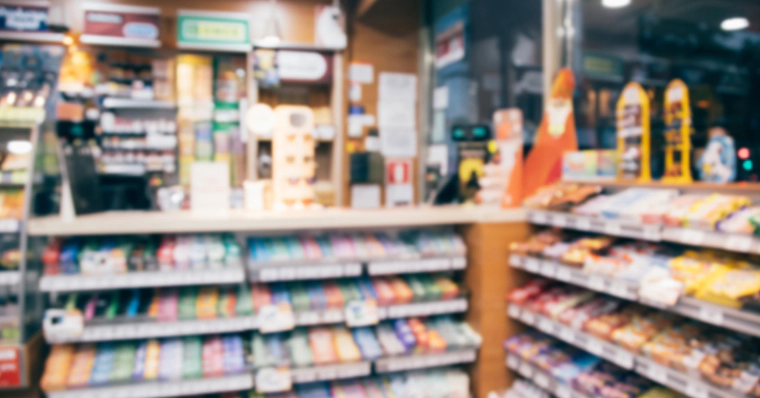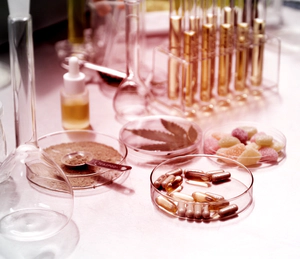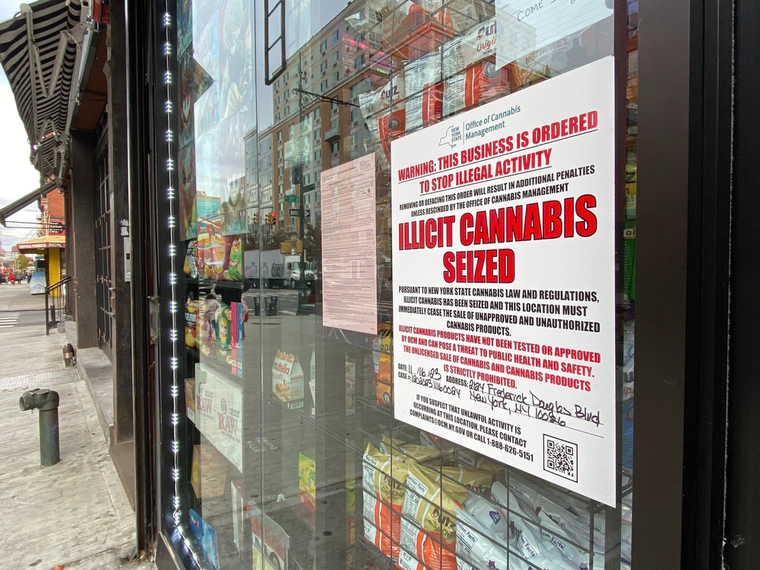New Cannabinoids on the Market and Their Dangerous Effects
Cannabis vendors and consumers alike are moving through dangerously uncharted territory with the development and sales of untested, uncontrolled, and intoxicating products.

On the subject of marijuana legalization, one thing must be understood: Today’s marijuana is nothing like the products that were consumed by today’s parents and grandparents in their youths. As marijuana has become a commercial commodity, the pressure was on to win market share.
Year by year, marijuana growers have engineered and hybridized cannabis plants, squeezing more and more tetrahydrocannabinol or THC out of each plant. For decades, the primary THC growers wanted in their plants was Delta-9 tetrahydrocannabinol. That’s the ingredient that has been most renowned for getting people high. The quantity of Delta-9 THC in commercial marijuana plants has increased from the 1–3% of the 1970s.1 Now, it’s easy to walk into a retail marijuana store and buy marijuana that contains 25–30% of Delta-9 THC.2
Today’s readily available marijuana products are vastly more psychoactive than previous products. But because of pro-legalization lobbying and advertising, the public has been convinced that marijuana has always been harmless and is still harmless. Therefore, marijuana keeps being legalized in one state after another.
The latest shift in the marijuana market is that products very high in Delta-9 THC are now being joined by a growing list of other cannabis products that create varying degrees of intoxication and harm.
A General Word About Cannabinoids
The cannabis plant is naturally made up of more than 400 different chemicals, 100 of which are classified as cannabinoids. These 100 substances have a wide variety of effects on the human body, including euphoria, hallucinations, sedation, appetite stimulation, panic attacks, and much more. The word cannabinoid indicates that these 100 substances have one unique quality in common: they interact with specific receptors in the human body referred to as cannabinoid receptors.3
In 2023, a study of the retail cannabis market found 26 different intoxicating cannabis compounds for sale. The most prevalent one was Delta-8 tetrahydrocannabinol (THC). Also found on the retail market were Delta-9 THC, CBD, THC-P, HHC, THCA, Delta-10 THC, THC-H, THC-B, THC-JD, THC-X, HHC-P, and Delta-11 THC. Most of the products offered blends of these different cannabinoids, including as many as eight different intoxicants into one retail product. Most of the retail products were vaping products or edibles.4
CBD: Cannabidiol
The effects of cannabidiol in the cannabis plant were identified in 1963, a year before Delta-9 THC was identified. CBD causes lowered awareness, sedation, drowsiness, irritation, and anxiety. By itself, it is said to have no psychoactive effects. Adverse effects of use that have been reported include liver injury, male reproductive toxicity, convulsions, changes to the blood that can cause excessive bleeding, and digestive distress.5
Because of the lack of regulation and testing in this industry, however, a person seeking the sedating effects of CBD may buy a product contaminated with Delta-9 THC.3
High CBD-content products from cannabis have been on the market since medical marijuana began being legalized in 1996. CBD was the product on the leading edge of medical marijuana legalization as it seemed to alleviate seizures suffered by some children—seizures that would not respond to other medication. Once marijuana legalization became acceptable to more people, epileptic children stopped being the message of marijuana legalization.
The Food and Drug Administration has approved one form of CBD as treatment for seizures resulting from three specific health problems.6

Photo by Carmen K. Sisson/Shutterstock.com
Delta-8 THC
The 2018 Farm Bill opened the door to the legal cultivation of hemp, defined as a cannabis plant that has .3% or less THC.7 Because of the profits to be made from commercialized cannabis products, growers began to process hemp extracts to create novel cannabinoids. One of the earliest to hit the commercial market was Delta-8 THC. In many states, Delta-8 THC sales are legal even if marijuana sales are not legal because hemp is a legal farm crop. Some states are considering closing this loophole.
Delta-8 THC is reported to be a less potent intoxicant than Delta-9 THC, however, the quantity of Delta-8 THC in food products is not controlled. That means that a person consuming Delta-8 THC-containing gummy bears, for example, could get a lot more of the drug than they realize. This exposure can trigger reactions in users that they do not expect. For example, in 2022, 3,358 people contacted a poison control center for help with exposure to Delta-8 THC.8
Adverse effects reported from the use of Delta-8 THC include hallucinations, confusion, anxiety, vomiting, dizziness, and loss of consciousness.9
Another source reports these effects for Delta-8:10
- Euphoria
- Visual and time distortion
- Difficulty thinking, speaking, and reading
- A dream-like state
Because Delta-8 is psychoactive, it can lead a user to become addicted. The National Institute on Drug Abuse notes that in 2022, approximately 11% of 12th-grade students in the United States used Delta-9 THC in the past year.11
In 2021 and 2022, the Delta-8 market was worth $2 billion. It’s no wonder why so many cannabis manufacturers jumped on this bandwagon.12
Synthesizing Delta-8 THC and Other Cannabinoids
To form the many novel cannabinoids now being researched, CBD is extracted from the cannabis plant and goes through an acidic chemical process to turn it into Delta-8, Delta-10, or other cannabinoids.10
“So far, I have not seen one that I would consider a legitimate delta-8-THC product. There’s some delta-8 in there, but there’s very frequently up to 30 .[test analysis] peaks that I can’t identify.”

However, this process is not standardized or even performed by certified labs. Therefore, chemists performing analyses of these and similar products make comments like these: “So far, I have not seen one that I would consider a legitimate delta-8-THC product. There’s some delta-8 in there, but there’s very frequently up to 30.[test analysis] peaks that I can’t identify.”13
A scientist at a cannabis manufacturing lab in California was interviewed by Chemical & Engineering News, and the resulting article noted that, “a lot of people are doing a poor job of cleaning up their reaction products…which results in ‘quite a soup’ of by-products and other unwanted compounds.”13
Delta-10 THC
A later arrival on the market is Delta-10 THC. Like Delta-8, it is said to have milder effects than Delta-9. Of course, a larger dose can get a person as high as using Delta-9. Many health claims are being made for Delta-10, but it is so new on the market that there are no studies available on its effects.
Like Delta-8, the Delta-10 on the market is synthesized from CBD. Only very small quantities occur naturally in the cannabis plant but it is easily converted from CBD. Delta-10 is officially classified as a New Psychoactive Substance.
THC-O or THC-O-acetate
This is a substance that does not occur naturally in the hemp or cannabis plant. The process of creating THC-O takes a hydrogen atom away from CBD and adds an acetyl molecule which is made of one oxygen, two carbon, and three hydrogen atoms. This process changes the way a drug works in the body. In some areas, it can be purchased in gummies and vaping cartridges. It is classified as another New Psychoactive Substance. Anecdotal reports claim that it is more potent than Delta-9.10 ,14 ,15
Converting CBD to Many Other Cannabinoids
When CBD is exposed to high temperatures and an acidic environment, it can be converted to many other cannabinoids, some of which are on the “recreational marijuana” market and many others that are not. For example, CBD converts to Delta-7 THC, Delta-8 THC, Delta-10 THC, Delta-11 THC, and many other forms.

Make no mistake: These are synthetic drugs. They have been processed with strong and toxic acids that may remain on the final products when processing is complete. One often-used chemical is toluene, which causes dizziness, loss of body control, and visual or auditory hallucinations. Heptane is also a common chemical and is toxic to the lungs, respiratory tract, and nervous system.13
All the cannabinoids that result from this processing act to a greater or lesser degree on cannabinoid receptors in the human body, which means they can have mental or physical effects or both. There is little information available on most of these cannabinoids, and few studies are yet available on their effects. Few occur in nature, and none are plentiful. Most are the result of exposing CBD to heat and acids that change the configuration of the atoms.
One study of commercially available cannabis products found 26 different intoxicating compounds currently available. The report goes on to state: the most prevalent [were] Delta-8 tetrahydrocannabinol (THC), THC-P, Delta-9 THC, HHC, THC-A, Delta-10 THC, THC-H, THC-B, THC-JD, THC-X, HHC-P, and Delta-11 THC. Overall, 54% of products were blends, containing two to eight different intoxicating compounds in a single product.16
Types of Cannabinoids Found on the Retail Market
Accurate information is scarce for many of these products. Few scientific studies exist as yet. Over time, better information will emerge for these products.
- CBDP Cannabidiphorol: Has mental and physical effects similar to Delta-9.
- CBN Cannabinol: This cannabinoid can have similar effects to Delta-9 if higher doses are used. https://www.ncbi.nlm.nih.gov/pmc/articles/PMC7357058/
- Delta-7 THC: Not widely available. May not be psychoactive.
- Delta-10 THC: Psychoactive, weaker than Delta-9.
- Delta-11 THC: Effects may be similar to but less strong than those of Delta-8 or Delta-9.
- HHC Hexahydrocannabinol: Similar effects to Delta-9 but possibly less potent.
- HHC-P: HHC is manipulated at the molecular level, resulting in HHC-P, which is said to be stronger than Delta-9.
- THCA Tetrahydrocannabinolic acid: Found naturally in the cannabis plant. When heated, THCA turns into Delta-9 THC.
- THC-B Tetrahydrocannabutol: May be similar to Delta-9 in effects.
- THC-H Tetrahydrocannabihexol: May be more potent than Delta-9.
- THC-JD Tetrahydrocannabioctyl: This cannabinoid is said to mimic the effects of psilocybin. It is also described as being much stronger than Delta-9.
- THC-P Trans-Delta-9-tetrahydrocannabiphorol: Believed to have similar or stronger effects (as much as 30 times stronger) than Delta-9 THC. Found in very small quantities in the cannabis plant; therefore, any THC-P on the market is synthetic.17 ,18
- THCV Tetrahydrocannabivarin: Adverse effects include dizziness, anxiety, or nausea. May help in cases of epilepsy.
- THC-X Tetrahydrocannabihexol: Seems to be an intoxicating blend of different forms of CBD.
The Possible Future of Cannabinoids
One study noted that genetic research has made it possible to cultivate cannabis plants that, in the future, could produce higher quantities of any of these cannabinoids, as scientists may wish. It may also be possible to strengthen the potency and effects of each substance.19
This quote related to Delta-8 sums up one of the major problems in this industry:
“Quality control is totally inadequate in the newly emerging Delta-8 THC industry. American consumers are ingesting products that are mislabeled with many compounds that have never received any toxicological testing.”20
One study of the industry reported: “Societal narratives such as cannabis being ‘natural’ or cannabidiol (CBD) being ‘safe,’ compared with tetrahydrocannabinol (THC), may give both patients and HCPs a false sense of security…. The extraction process may introduce harmful solvents and contaminants, such as naphtha, butane, and petroleum ether. At-risk populations such as those with significant comorbidities or the elderly may be at increased risk of harm from such contaminants.”21
An Out-of-Control Industry?

Photo by Here Now/Shutterstock.com
If you have gotten the impression that the cannabis industry is completely out of control, you would be correct. There are no controls to ensure that cannabis products are monitored as to purity or dosage, as is done with pharmaceutical products. In many states, there is little control over who buys these products. There is little to no testing to detect toxic residues, pesticides, fungi, chemicals, or other harmful substances included in any cannabis product. There are very few studies to report on the safety, harm, benefits, or addictiveness of the novel products included in this article.
Legalization of medical and recreational marijuana, commercialization of the cannabis industry, the 2018 Farm Bill, and a lack of control over the manufacture of these new and novel synthetic cannabinoids have all contributed to a dangerous, unmonitored, uncertified industry where the consumers are the unwitting guinea pigs.
Many of these products are currently available on the internet. If you have a teen or young adult in your household, they are probably hearing about these products. If they are curious and look online, they’ll find them. You can protect them by being well informed, doing your own research, and being alert to the possibility of their use of these drugs.
Above all, be prepared for a future that is drastically different from the past, and do not be naive. The novelty of these drugs will appeal to many youth who want the thrill of engaging in risky behavior.
Sources:
-
Marijuana Potency. Smart Approaches to Marijuana, 2021. SAM ↩︎
-
Florida Legislature Weighs Caps On Medical Marijuana Potency. WFSU, 2021. WFSU ↩︎
-
Cannabidiol {CBD)—Potential Harms, Side Effects and Unknowns. Substance Abuse and Mental Health Services Administration, 2023. SAMHSA ↩︎ ↩︎
-
Types and Brands of Derived Psychoactive Cannabis Products. National Library of Medicine, 2024. NLM ↩︎
-
Cannabidiol Adverse Effects and Toxicity. National Library of Medicine, 2019. NLM ↩︎
-
What You Need to Know (And What We’re Working to Find Out) About Products Containing Cannabis or Cannabis-derived Compounds, Including CBD. Food and Drug Administration, 2020. FDA ↩︎
-
Hemp & Marijuana. Tennessee Bureau of Investigation, undated. TBI ↩︎
-
‘A false sense of security’: Experts say delta-8 THC products can still be dangerous. CNN, 2024. CNN ↩︎
-
5 Things to Know about Delta-8 Tetrahydrocannabinol. Food and Drug Administration, 2023. FDA ↩︎
-
Delta-8-Tetrahydrocannabinol, an emerging NPS and other structurally related cannabinoids. ScienceDirect, 2022. ScienceDirect ↩︎ ↩︎ ↩︎
-
Delta-8-THC use reported by 11% of 12th graders in 2023. National Institute on Drug Abuse, 2024. NIDA ↩︎
-
Delta-8 THC Generated $2 Billion In Revenue In Two Years, Report Finds. Forbes, 2023. Forbes ↩︎
-
Delta-8-THC craze concerns chemists. Chemical & Engineering News, 2021. C&EN ↩︎ ↩︎ ↩︎
-
What is THC-O-Acetate and Why Is It Getting Attention? Forbes, 2022. Forbes ↩︎
-
∆8-THC, THC-O Acetates and CBD-di-O Acetate. National Library of Medicine, 2022. NLM ↩︎
-
Types and Brands of Derived Psychoactive Cannabis Products: An Online Retail Assessment. National Library of Medicine, 2023. NLM ↩︎
-
A novel phytocannabinoid isolated from Cannabis sativa L. Nature, 1999. Nature ↩︎
-
Manipulation of the tetrahydrocannabinol side chain delineates agonists, partial agonists, and antagonists. ASPET Journals, 1999. ASPET ↩︎
-
The Dark Side of Cannabidiol: The Unanticipated Social and Clinical Implications of Synthetic Δ8-THC. National Library of Medicine, 2019 NLM ↩︎
-
A Clinical Framework for Evaluating Cannabis Product Quality and Safety. National Library of Medicine, 2023. NLM ↩︎







 ®
®